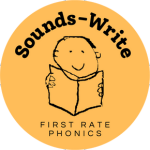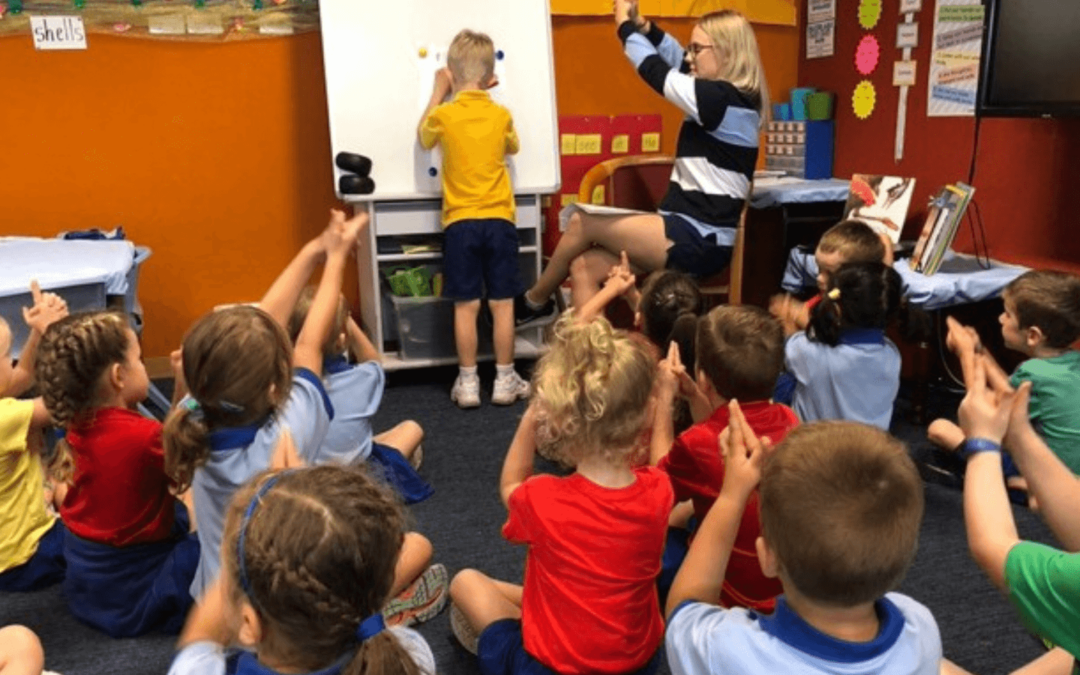When considering the Phonics Screening Check and the code knowledge that needs to be learned, there can sometimes be an urgency to ‘get through’ the scope and sequence. The beauty of Sounds-Write is that the scope and sequence follow a cumulative nature, meaning you can revisit previously taught code while introducing new code.
But what does cumulative teaching mean in phonics, and why is it so important? In this blog, we’ll explore how cumulative teaching works within Sounds-Write, why it’s vital for student success, and how formative assessment can guide when to move on to new units.
What is Cumulative Teaching in Phonics?
Cumulative teaching involves revisiting and reinforcing previously learned content while introducing new information. In Sounds-Write, it means each unit builds upon prior learning, allowing students to reinforce and strengthen their understanding of sound-spelling correspondences over time.
For example, in Unit 4 of the Initial Code, students don’t just learn new sound-spelling correspondences; they revisit what they learned in Units 1-3. By recycling word structures and sound-spellings correspondences, this approach ensures that students don’t forget prior learning. What this means is that, when we talk about ‘mastery’, it is not necessary for 100% of students to have mastered 100% of the sound-spelling correspondences before we move on.
So, when do you move onto the next unit?
So, how do we determine when students are ready to move to the next unit? The Sounds-Write approach recommends moving on when 75-80% of your class has achieved 75-80% proficiency in the current unit. This ensures that most students are ready to progress, while others can catch up with targeted support during teaching or through interventions.
Formative assessment plays a crucial role here. Throughout each lesson, you’ll be probing for understanding, responding to errors, and providing feedback to consolidate learning. By the final days of a two-week unit, you can use specific lessons to check if students have mastered the sound-spelling correspondences taught. In the Initial Code, for instance, Lesson 4 can serve as a review opportunity, and in the Extended Code, Lesson 7 can be used for word reading and writing assessments.
But what about the students who are working below 75-80% proficiency?
Not all students will be ready to move on at the same pace. Some students may be working below 75-80% proficiency and need additional support to “keep up“ or even “catch up.” This is where responsive teaching becomes essential.
By carefully planning your sessions, you can ensure all students are supported during whole-class teaching. Scaffolding strategies, such as selecting words appropriate for students’ current levels, can make a big difference. For example, if you’re teaching Unit 7, focusing on the /e/ sound, a student at the CVC level may struggle with complex word structures, such as the word ‘bread’. By choosing simpler words like “red” (a CVC word with two continuants), the student can participate successfully, with additional support such as stretching out the sounds: /r/ /e/ /d/.
By aligning the complexity of words with students’ abilities, you give everyone the chance to participate and reinforce key phonetic skills, whilst still progressing with teaching the new code knowledge to the whole class.
Maintaining fidelity to the scope and sequence…
While providing extra support for struggling students is important, it’s also essential to maintain fidelity to the Sounds-Write scope and sequence. For most students, this means sticking to the pace outlined in the curriculum, while using “keep up” and “catch up” interventions for those who need them.
In Reception, you’ll typically spend two weeks on each unit. After establishing routines and expectations at the beginning of the year, aim to cover Units 1-7 in the first 14 – 16 weeks of school. By Units 8-10, students won’t be learning new code knowledge but will be revisiting and consolidating their skills within more complex word structures, such as three-to-five sound words containing adjacent consonants. This cumulative review helps consolidate previous code knowledge and prepares students for more advanced conceptual knowledge in Year 1. In Year 1, we also start our systematic teaching of polysyllabic words which provides yet another opportunity for revisiting previously taught code.
If you’re in the U.K., we recommend reading our document, ‘Phonics Screening Check Guidance UK Aus‘, (exclusive to Sounds-Write trained practitioners only). This document details certain units which may need to be taught earlier, or certain pieces of code which could be taught tangentially before they come up on the scope and sequence.
The cumulative nature of Sounds-Write ensures that students build phonics knowledge and skills in a systematic way, revisiting and reinforcing previous learning while introducing new content. By using formative assessments and responsive teaching, you can ensure that all students make steady progress while keeping pace with the curriculum. Maintaining fidelity to the scope and sequence, combined with targeted scaffolding, prepares students not only for the Phonics Screening Check but for long-term success in reading and spelling.
Further reading
Mastering Phonemic Awareness: Your Key to Success
Practical teaching tips to get students ready for PSC
Phonics Screening Check: Our Analysis
A deep dive on the 2024 PSC results, by CEO, John Walker
Mid-Year Strategies to Ensure Everyone is on Track
Pointers for reviewing class progress and palnning for the months ahead.
Sounds-Write Ltd
Whiteleaf Business Centre
11 Little Balmer
Buckingham
MK18 1TF
Tel: 01280 825537
Registered in England and Wales: 04655753
VAT Number: 821260076
Copyright Sounds-Write Ltd




